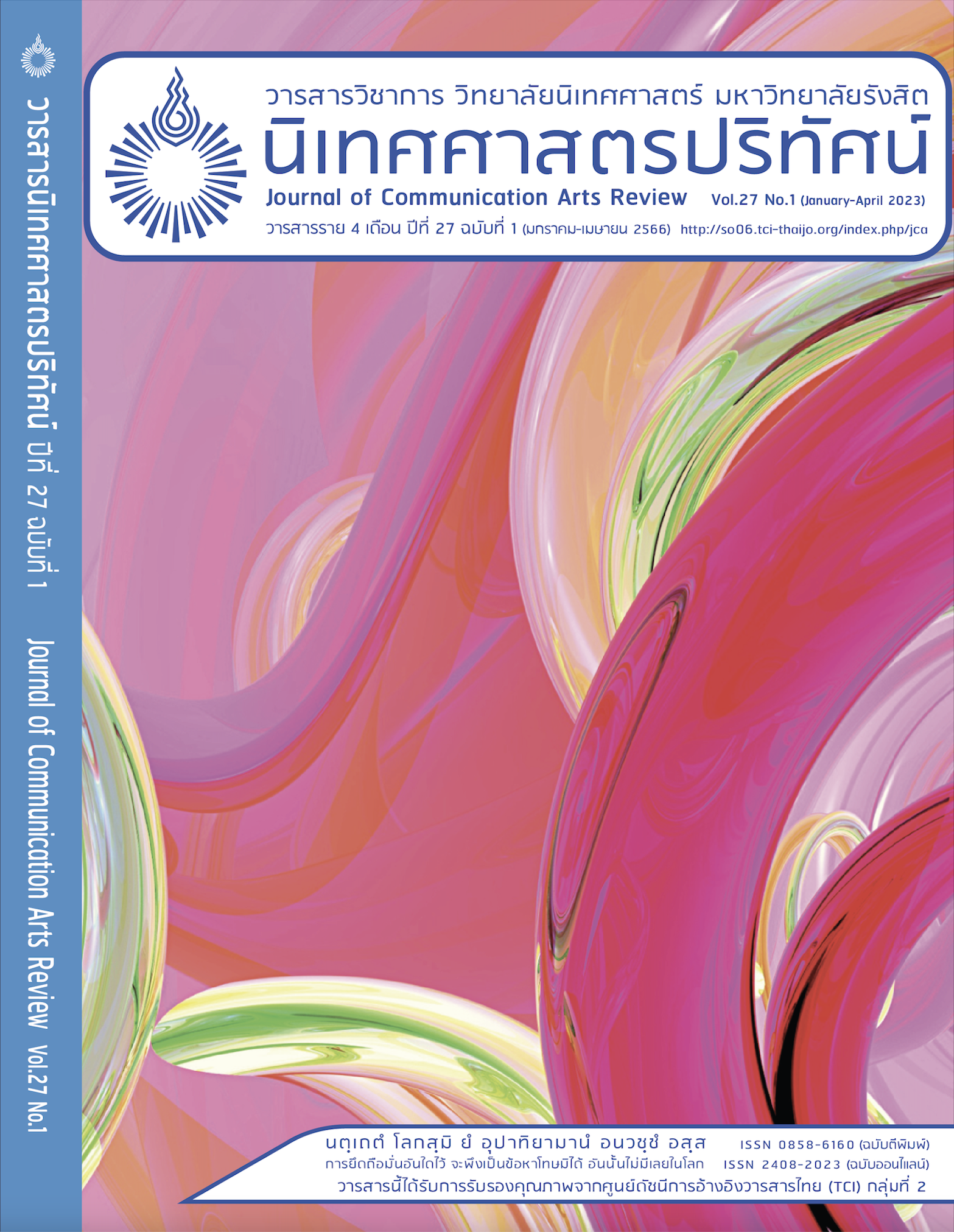Training Program Development of Artificial Intelligence Skills and Knowledge for Communication for Working Age Personnel
Keywords:
Training Program Development, Artificial Intelligence in Communication, Knowledge and Skills of Artificial Intelligence in CommunicationAbstract
The objective of the research is to develop training program of Artificial Intelligence (AI) skills and knowledge of communication for working Age personnel. This is a qualitative research using focusgroup interview as method of data collection in which 2 groups of 10-12 participants using AI system in works: academic experts and professionals from AI system and communication fields; experts from training course development; representatives from management and operational level from business sector in Thailand; entrepreneurs and SME employees; and representatives from management and operational level from public sector.
The results of the research showed that for each element of The Course Module, in Knowledge Base Module, topics that should be added in the course in order that the business sector can apply to their work include Basic knowledge of AI, Limitation of AI for communication, Ethics of applying AI for work, and Using AI for marketing communication.
Additionally, in AI Tool using in marketing communication, regarding to Student Module, the results showed that learners expected the outcome of AI that serve their works relating to policy development, planning and decision, especially for learners in management level while learners in operational level require AI for work process development.
In Pedagogical Module, results showed that trainers should be from professionals, business owners or AI experienced people with coaching skills that could share and their work experience in AI for marketing communication. Finally, in Interface Module or Learning Environment, results showed that promoting the course by giving learners certificate could be supportive for the organizations as well as accredit for higher education in universities while using testimonial inspiring people interested in applying the course could be another way of promotion.
References
จันทร์จารี เกตุมาโร. (2555). การพัฒนาหลักสูตรฝึกอบรมการสร้างภาวะผู้นำ. [ดุษฎีนิพนธ์, มหาวิทยาลัยรามคำแหง]
ฉันทลักษณ์ มงคล (2562). สถาบันการวิเคราะห์ผู้เชื่อมช่องว่างระหว่างองค์กรกับปัญญาประดิษฐ์. https://www.ftpi.or.th/2019/32813
ณัฐวุฒิ พงศ์สิริ. (2561). จริยธรรมในปัญญาประดิษฐ์. https://www.thansettakij.com/general-news/320036
สำนักงานพัฒนารัฐบาลดิจิทัล. (2562). เทคโนโลยีปัญญาประดิษฐ์สำหรับการบริหารงานและการบริการของภาครัฐ. กรุงเทพ: บริษัท ส. วิจิตรการพิมพ์ จำกัด.
อมรรักษ์ สวนชูผล. (2563). การจัดการองค์กรธุรกิจกับปัญญาประดิษฐ์เพื่อความอยู่รอดทางธุรกิจ. วารสารวไลยอลงกรณ์ปริทัศน์ (มนุษยศาสตร์และสังคมศาสตร์). 10(3). หน้า 155-164.
Chell, E. & Athayde, R. (2009). The Identification and Measurement if Innovation Characteristics of Young people: Development of the Youth Innovation Skills Measurement Tool. United of Kingdom: National Endowment for Science, Technology and the Arts.
Christian, Jon. (2019). China Built an AI to Detect Corruption and Officials Shut it Down. https://futurism.com/the-byte/china-ai-corruption
Deloitte. (2014). Technology and People: The Great Job Creating Machine. https://www2.deloitte.com/content/dam/Deloitte/uk/Documents/finance/deloitte-uk-technology-and-people.pdf
Dutton, Tim. (2018). An Overview of National AI Strategies. https://medium.com/politics-ai/an-overview-of-national-ai-strategies-2a70ec6edfd
European Commission. (2019). Digital Single Market, AI Policy. [Online]. Retrieved from European Commission. https://ec.europa.eu/digital-single-market/en/artificial-intelligence
Feng-Jen Yang. (2010). Theideology of intelligent tutoring system. University of North Texas at Dallas Dallas Texas. Inroads Magazine, 1(4): 63-65.
Good, Carter, V. (2012). Dictionary of Education (3"' ed.). New York: McGraw-Hill.
Haslam, S. A. (2006). The glass cliff-the dynamics of gender, risk and leadership in the contemporary organization. UK: [n.p.].
Johnson, A. (2019). “5 Ways AI Is Changing the Education Industry”. Educational Technology. https://elearningindustry.com/ai-is-changing-the-education-industry-5-ways
Kallick, Bena., and Zmuda, Allison. (2017). Students at the Center: Personalized Learning with Habits of Mind. Alexandria, VA: Association of Supervision and Curriculum Development.
McCarthy, J. (2007). What is Artificial Intelligence. http://www-formal.stanford.edu/jmc/whatisai/node1.htm
Mo, Yan. (2008). The Relationship between Enterprise Innovation Network’s Pattern and Innovation Performance. In Management of Innovation and Technology. ICMIT 2008. 4th IEEE International Conference on 21-24 September 2008. pp. 76-80.
Rodriguez, C. Osvaldo. (2012). MOOCs and the AI-Stanford Like Courses: Two Successful and Distinct Course Formats for Massive Open Online Courses. https://eric.ed.gov/?id=ej982976
Roger, E. M. (2003). Diffusion of Innovations (5th ed.). Free Press.
Valier, F. M., McCarthy, R. V., & Aronson, J. R. (2008). A primary study of attributes of innovations during the prediffusion stage. Journal of International Technology and Infornation Management, 17, 219-233.
Global Perspective & Solutions. (2017). Disruptive Innovation. https://icg.citi.com/icghome/what-we-do/citigps/insights, 3 Apr 2021.
Downloads
Published
Issue
Section
License
Copyright (c) 2023 Journal of Communication Arts Review

This work is licensed under a Creative Commons Attribution-NonCommercial-NoDerivatives 4.0 International License.


